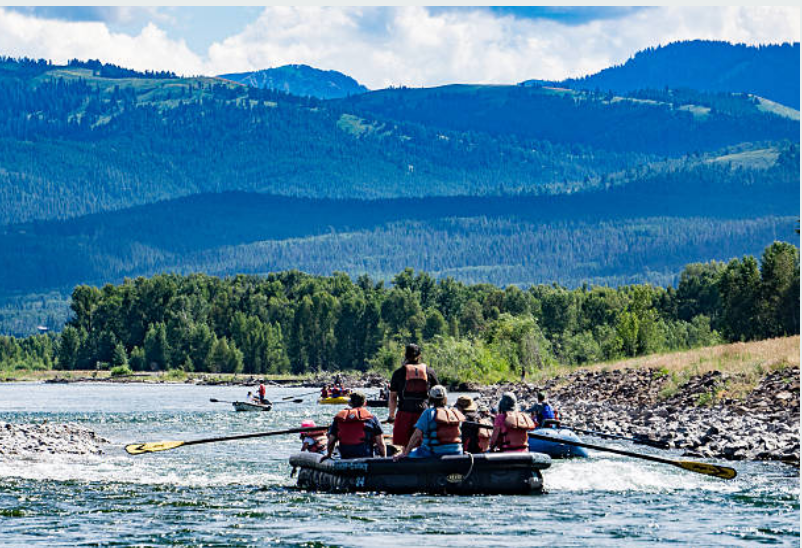White water rafting can be an exhilarating experience, an absolute wild adventure. But, as with most adrenaline-fueled sports, there are potential safety issues. Rafting a river is an inherently dangerous activity, especially if you are ill-equipped or inexperienced. But, armed with a few tips, and, potentially, some preparation ahead of time, you can limit the risks involved.
Use an experienced guided service to take you and others down the river safely. While accidents can and do still unavoidably happen on these trips, a good guide’s experience can be invaluable in keeping you safe.
A raft guide often runs the same stretches of river day-in and day-out, and they know the lines the raft should take through churning waves, around obstacles, etc. Also, make sure your life vest is worn always. No, a life vest is not always the most comfortable of apparel, but it will hopefully keep you afloat, help you to swim if you do happen to fall out of the boat. Many times, a guided service will even require the use of a helmet on rockier stretches of water. Also, make sure you wear appropriate clothing.
You may want to use a wet suit or a splash jacket in early or late season, when both the air and water temps are cold. Hypothermia can take hold quickly. If your rafting outfitter is recommending you use these articles of apparel to keep you warm, it’s probably best to listen to their advice. Also, if you are on a raft where it’s everyone’s job to paddle the raft down the river, hold the paddle appropriately. An improperly held paddle can swing back or up in the upward swell of a wave, and knock out teeth, etc.
If you are paddling a river in your own boat for the first time, make sure you get to know the water. Look at river maps. River maps can be found at most sporting goods stores, and, if you are feeling high tech, then check out the stretches of the river you intend to float on Google Earth.
For those of you visiting the Bitterroot Valley this spring and summer to float the rivers, stay safe and have fun.







